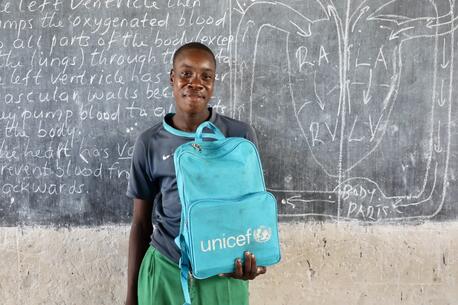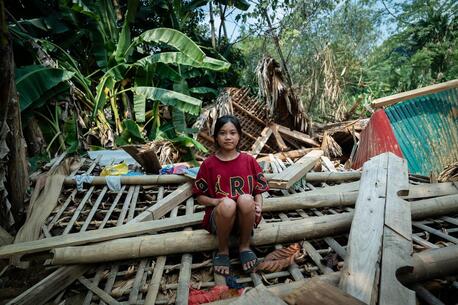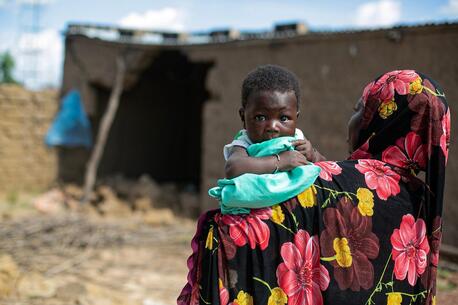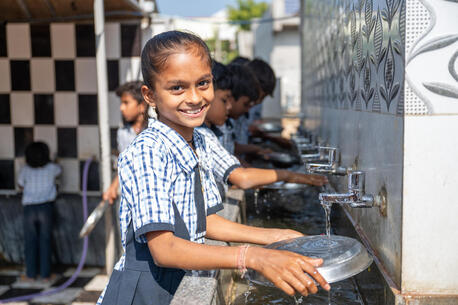
UNICEF in India
Climate change and related shocks are depriving many children and families in India from enjoying the benefits of India's economic growth. UNICEF is there, working with local partners to strengthen critical systems and reach the most vulnerable with health care, nutrition support, education and protection. Learn more, including how to help.
Climate change and poverty drive humanitarian needs in India
India has experienced significant economic growth in recent decades, resulting in important development gains for children and families. Extreme poverty is down 21 percent. Infant mortality has declined by more than half. As many as 80 percent of women now give birth in a health facility. There are 2 million fewer children out of school.
Yet many challenges remain. Children from rural areas, urban poor families and other disadvantaged populations suffer from multiple deprivations including poor access to safe water and sanitation, health care, education and protection from exploitation. Nearly 2 in 5 children are stunted. Outbreaks of vaccine-preventable diseases persist.
India's children are on the front lines of the climate crisis
Climate change and environmental degradation are leading to unprecedented disasters; approximately 6 million children in India are affected by weather- and climate-related calamities every year.
Rapidly melting glaciers and snows in the Greater Himalayan region elevate the risk of flooding and landslides, and pose a serious long-term threat to water security. Air pollution is another problem; India is home to 10 of the world’s 20 most polluted cities, leading to more than 500,000 premature deaths every year.
Rural farming communities are particularly sensitive to crop-destroying climate shocks. Low-income populations living in slum conditions in urban areas are also highly vulnerable to climate-related disasters.
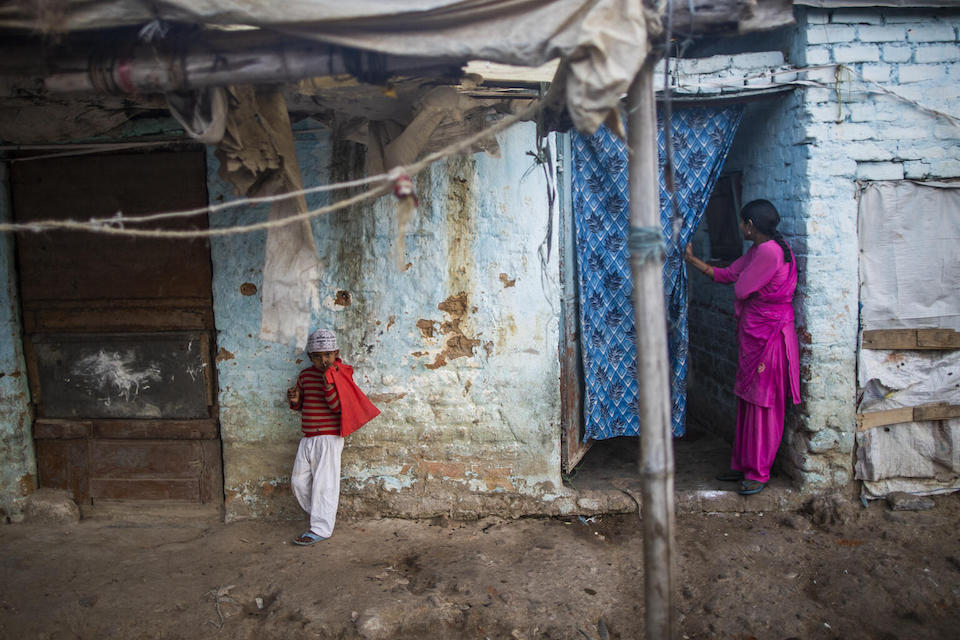
Children in India are at risk of child labor, child marriage
Lingering effects of the COVID-19 pandemic add to the strain on household income and livelihoods, increasing food insecurity and leading families to turn to negative coping mechanisms like sending children to work instead of school, or arranging for early marriage.
A major population shift from rural areas to the big cities has overwhelmed social safety nets that are already stretched to the breaking point.
UNICEF priorities in India: partnering to strengthen systems and build climate resilience
Programs and partnership efforts in India focus on helping India strengthen critical systems to build climate resilience and manage climate change-induced displacement and migration. To that end, UNICEF collaborates with government and community partners to monitor risks and trends and boost emergency preparedness and response mechanisms.
To name one example, UNICEF helped enlist 195 community radio stations in 26 states to be part of an early warning system that can get messages out to 30 million people in the event of an emergency, including those living in high-risk communities and frontline workers in remote locations.
UNICEF also engages with local authorities, organizations and communities — including young people — to ensure humanitarian work ladders up to development goals.
When climate disasters strike, UNICEF is there to support the response — providing safe water, school supplies, mental health and psychosocial support, among other lifesaving and life-sustaining assistance. With every emergency response to a natural or human-caused disaster, partners prioritize system strengthening and sustainable recovery.
How UNICEF is supporting children's health, nutrition, protection and education in India
Ongoing UNICEF efforts in India span all major program areas. Examples include:
- bringing greater visibility to the mental health needs of children and adolescents through evidence generation, well-designed social media campaigns and community outreach
- training child protection specialists and integrating child protection measures and climate change resilience building into education programs
- providing protective services and support, including freeing children from child labor and trafficking
- reuniting unaccompanied and separated children with their caregivers or providing them with family-based or alternative care services
- supporting children's continued access to quality education, including early education, at schools, temporary learning spaces and Child-Friendly Spaces, including in remote areas affected by floods and cyclones
- helping make sure girls stay in school — in India, adolescent girls finish secondary school at a much lower rate than adolescent boys — and avoid early marriage (India is home to the largest number of child brides in the world)
- supporting government vaccination programs and otherwise increasing child immunization rates to reduce preventable diseases
- strengthening health services for adolescent girls and pregnant women
- supporting government programs focused on malnutrition prevention and response, including helping to implement a community-based program for early identification and management of children with severe wasting in 11 states
Learn more about what UNICEF is doing in India to support children and families in need.
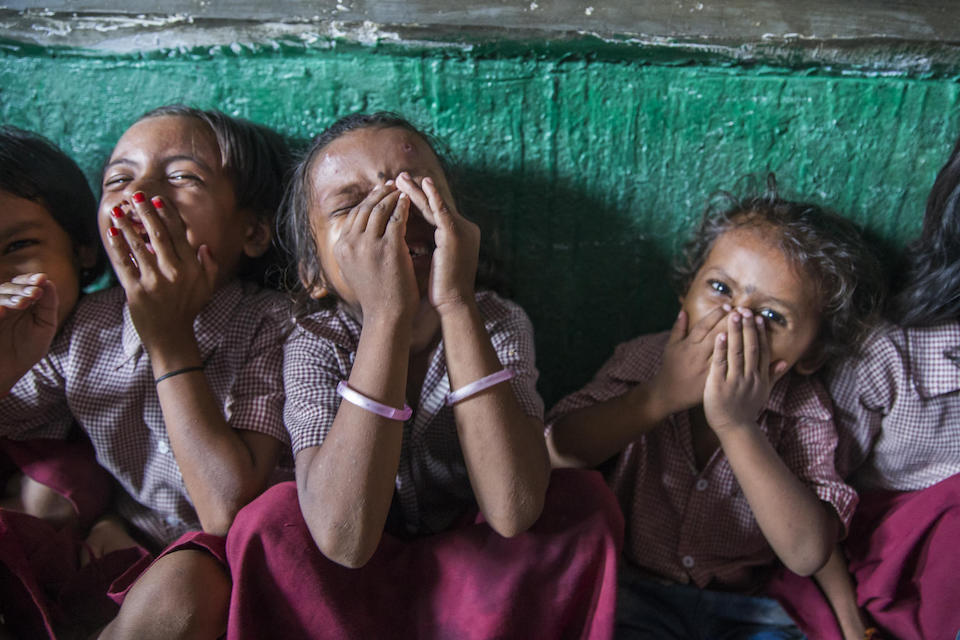
UNICEF works in over 190 countries and territories to help children get educated and stay healthy, protected and respected.
Unrestricted donations give UNICEF the flexibility to direct resources to the most urgent needs. Help give children in India and around the world the support and protection they need to survive and thrive. Donate today.
